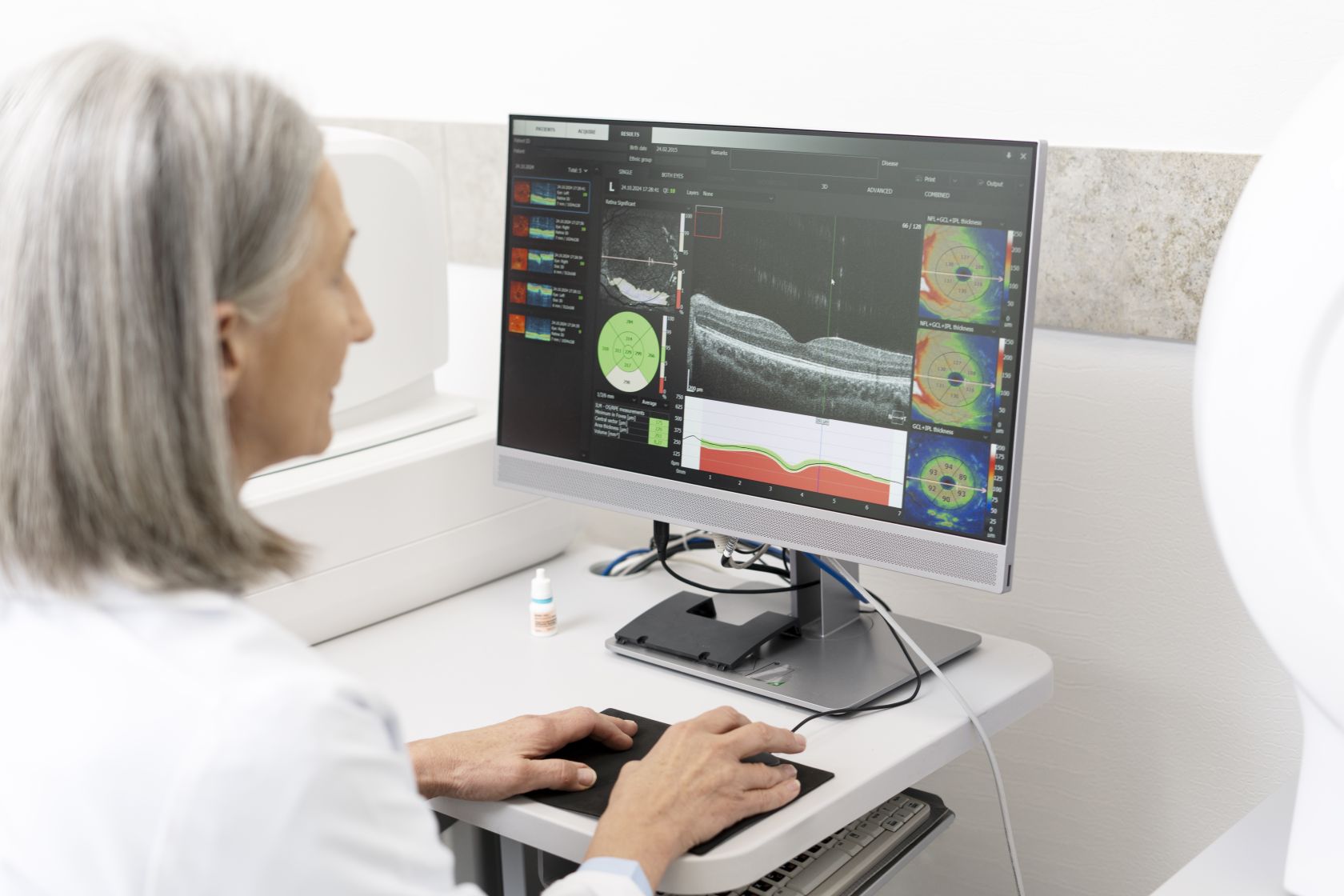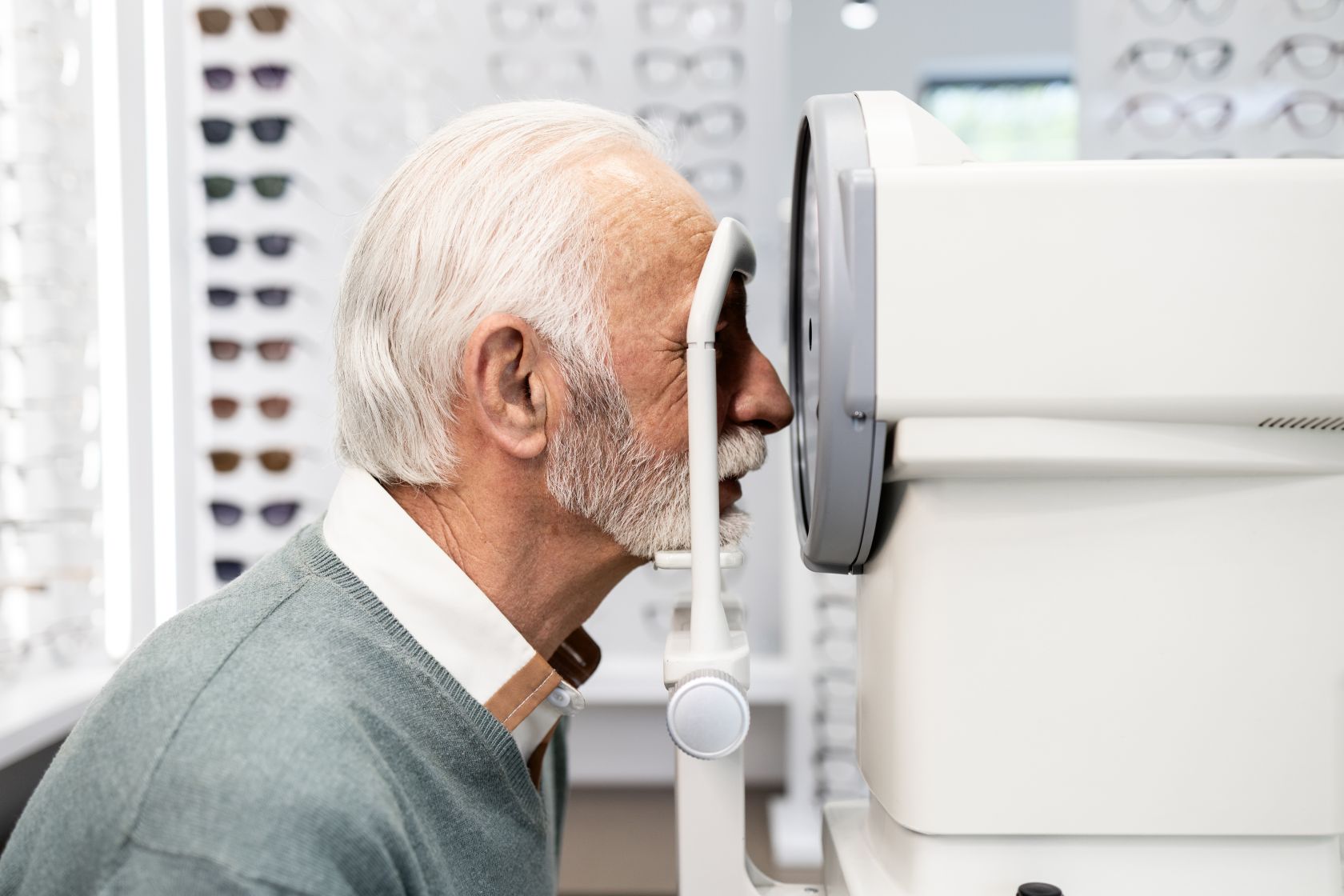This condition is a leading cause of irreversible vision loss in people over 50, significantly compromising quality of life.
AMD causes deterioration of the macula, leading to the gradual loss of central vision, while peripheral vision usually remains preserved. There are two main forms of disease:
Dry (or atrophic) AMD: accounts for approximately 85-90% of cases. It is characterised by thinning of the macula and the presence of drusen (yellow deposits under the retina). Progression is generally slow.
Wet (or exudative) AMD: rarer, but more serious. It is characterised by the abnormal growth of blood vessels under the retina, which can leak fluid or blood, causing rapid loss of central vision.
AMD is a highly prevalent condition in countries with ageing populations. It is estimated that more than 200 million people worldwide live with some degree of the disease, and this number is expected to exceed 300 million by 2040, according to data from the BrightFocus Foundation. Prevalence increases significantly with age, especially after age 65.
Risk factors include advanced age, family history of AMD, smoking, high blood pressure, obesity, and prolonged exposure to sunlight without adequate protection.

AMD is diagnosed primarily through an ophthalmological evaluation, which includes the following tests:
• Fundus examination: allows visualisation of drusen or changes in the macula.
• Optical Coherence Tomography (OCT): provides detailed, high-resolution images of the retina, helping to identify fluid or atrophy.
• Fluorescein angiography: Used to detect abnormal blood vessels in the wet form of the disease.
• Amsler test: Simple and useful for identifying visual distortions (metamorphopsia).
Regarding treatments, although dry AMD still has no cure, there are approaches that can slow its progression. The wet form, on the other hand, has effective treatments that can stabilise or even improve vision in some cases.
For dry AMD, the following are recommended:
• Nutritional supplementation:
Studies such as the AREDS (Age-Related Eye Disease Study) have shown that a combination of antioxidants (vitamins C and E), zinc, copper, lutein, and zeaxanthin can slow the progression of the disease in the intermediate stages.
• Lifestyle modification: Smoking cessation, blood pressure control, and a diet rich in green leafy vegetables and fish are recommended measures.

For wet AMD:
• Intraocular injections of anti-VEGF (vascular endothelial growth factor):
These are administered directly into the eye to block the growth of abnormal vessels and reduce edema. This treatment requires ongoing monitoring.
• Photodynamic therapy (less common today): This combines the application of photosensitive medication with a laser to destroy abnormal vessels.
• Surgery and thermal laser: These are rarely used, and usually only in specific cases.
AMD is a debilitating condition, but early detection and appropriate treatment can preserve vision for many years. Regular eye checkups are essential, especially after age 50. Awareness and control of risk factors also play an essential role in preventing disease progression.
The HPA Institute is currently the most advanced ophthalmology centre in the Algarve, both in terms of its innovative equipment and its specialised and distinguished clinical staff. Get to know us at https://www.grupohpa.com/en/units/clinics/instituto-hpa-montenegro-faro/













